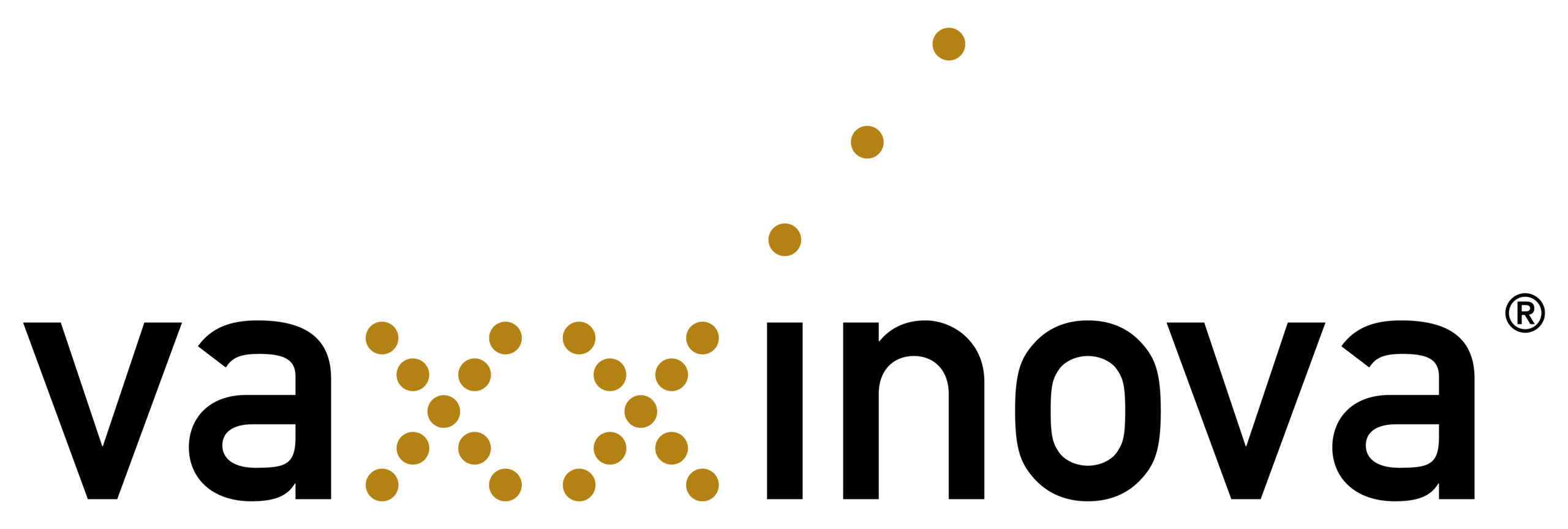Lactococcus: an emerging disease in Brazilian tilapia culture
Lactococcosis: an emerging disease in Brazilian tilapia culture
Santiago Benites de Pádua, DVM, MSc in Aquaculture – Aquaculture Marketing Manager – Vaxxinova Brazil
Henrique C. P. Figueiredo, DVM, PhD. – Professor of aquatic animal health – Veterinary School, Federal University of Minas Gerais – Brazil
Lactococcosis is an emerging disease in Brazilian tilapia culture, caused by Gram-positive lactic acid bacteria belonging to the genus Lactococccus. Two main species of Lactococcus have been associated with infections in fish, being Lactococcus garvieae and, more recently, Lactococcus petauri. Both pathogens share many phenotypic, genetic similarities as well as similarities in the pathology they cause in animal. Causing diseases similar to streptococci agents, which are widely known by tilapia farmers.
In Brazil, until recently, Lactococcus occurrences were more common in native fish, especially in surubim catfish, associated with Lactococcus garvieae infection. Since 2020, when we began to record the first outbreaks of mortality associated with Lactococcus petauri in a tilapia farm in Central Brazil. Afterwards, the disease has been dispersing and emerging through different basins. Especially in northeastern Brazil, where it caused important outbreaks of mortality during the summer of 2021/2022, with cumulative losses that reached between 15 and 35% of animals in the grow-out in cages.
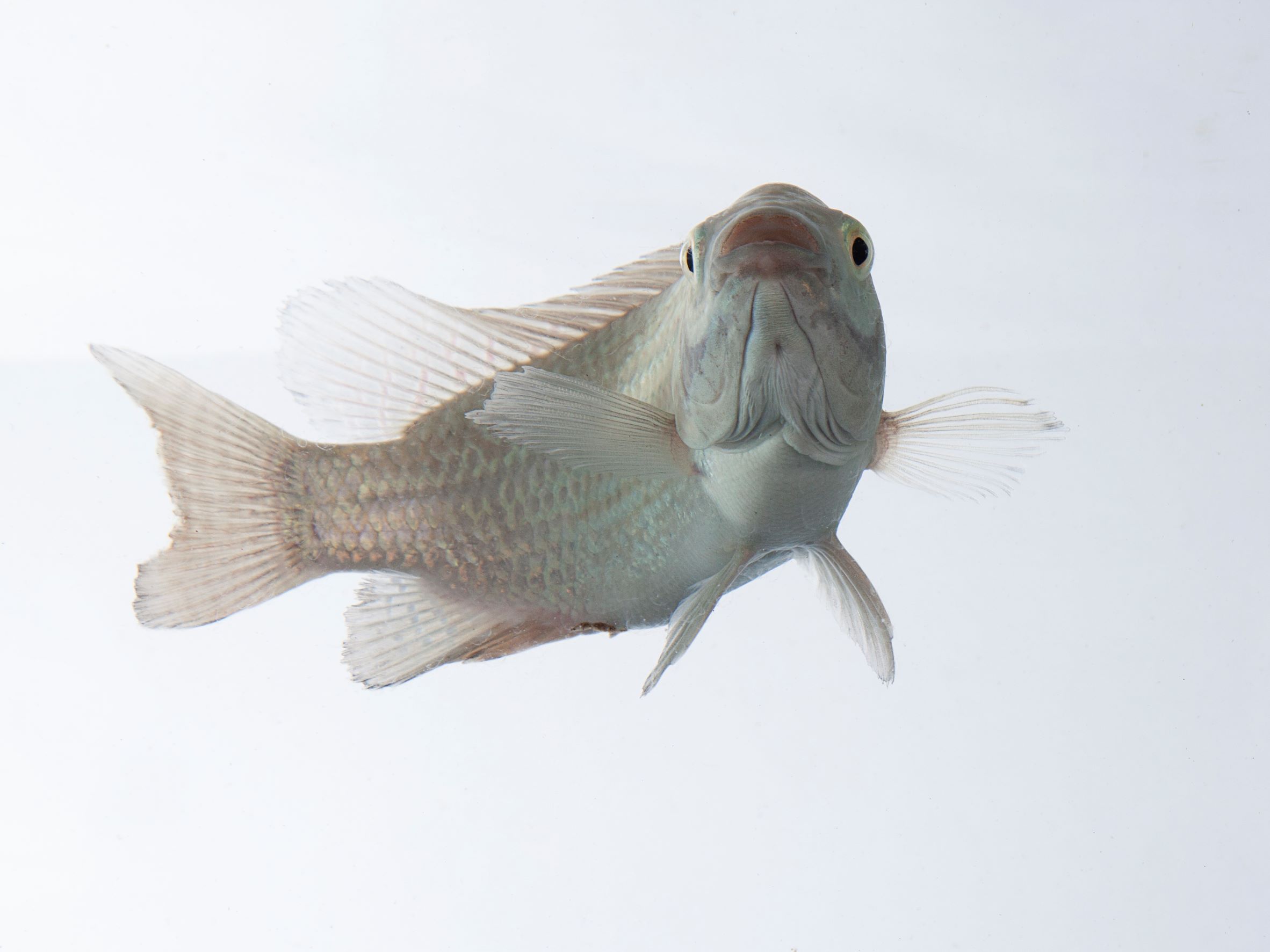
Figure 1 shows the dispersal profile of these pathogens in recent years in Brazil, where farms were listed with reports of mortality outbreaks with Lactococcus petauri isolation, as well as associated with the diagnosis of Streptococcus species on the same production unit.
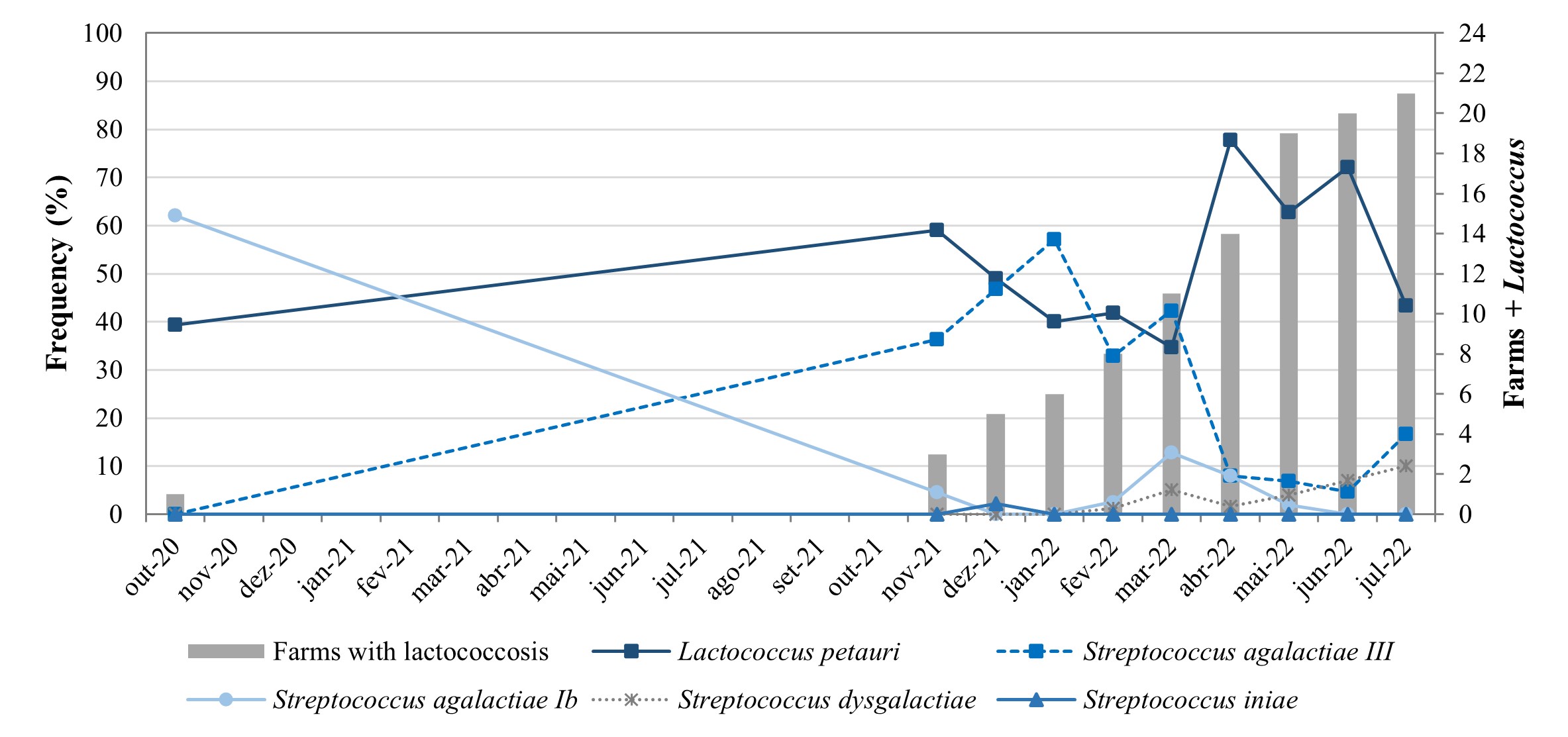
Figure 1. Frequency of isolation of Lactococcus petauri and Streptococcus species in diseased tilapia reared in cages during the emergence of lactococcosis in Brazil between 2020-2022.
Risk factors
Little is known about the risk factors of lactococcosis for Nile tilapia, since it is an emerging disease. Further studies are needed to better understand the triggers that promotes infection and disease, profile of susceptibility to the pathogen and occurrence of mortality outbreaks. From our brief experience with this new agent, we have observed that the increase in water temperature is a major risk factor for the occurrence of lactococcosis, as we observed for streptococci, since the main outbreaks of mortality were diagnosed between the end of the spring and during the summer period. There is a decrease of L. petauri isolation and clinical manifestation in fish as the water temperature decreases, with the arrival of autumn and winter. A priori, we notice that this disease follows patterns similar to the risk factors we observed for streptococci in tilapia.
Other risk factors, such as feeding practices, stocking density and changes in water quality conditions should still be evaluated for a better understanding of the dynamics of Lactococcus infection in the field.
Since the first outbreak by Lactococcus petauri diagnosed in 2020, we observed that susceptible fish to the pathogen were mainly in sub-adult rearing phase, being diagnosed lactococcosis in animals weighing from 160 g of live weight. However, in subsequent outbreaks that occurred in northeastern Brazil, it is observed that this pathogen began to impact juvenile tilapia, where the disease was diagnosed in fish weighing from 30 g, however, concentrating greater impact on animals at sub-adult and final grow-out phase. (Figure 2).
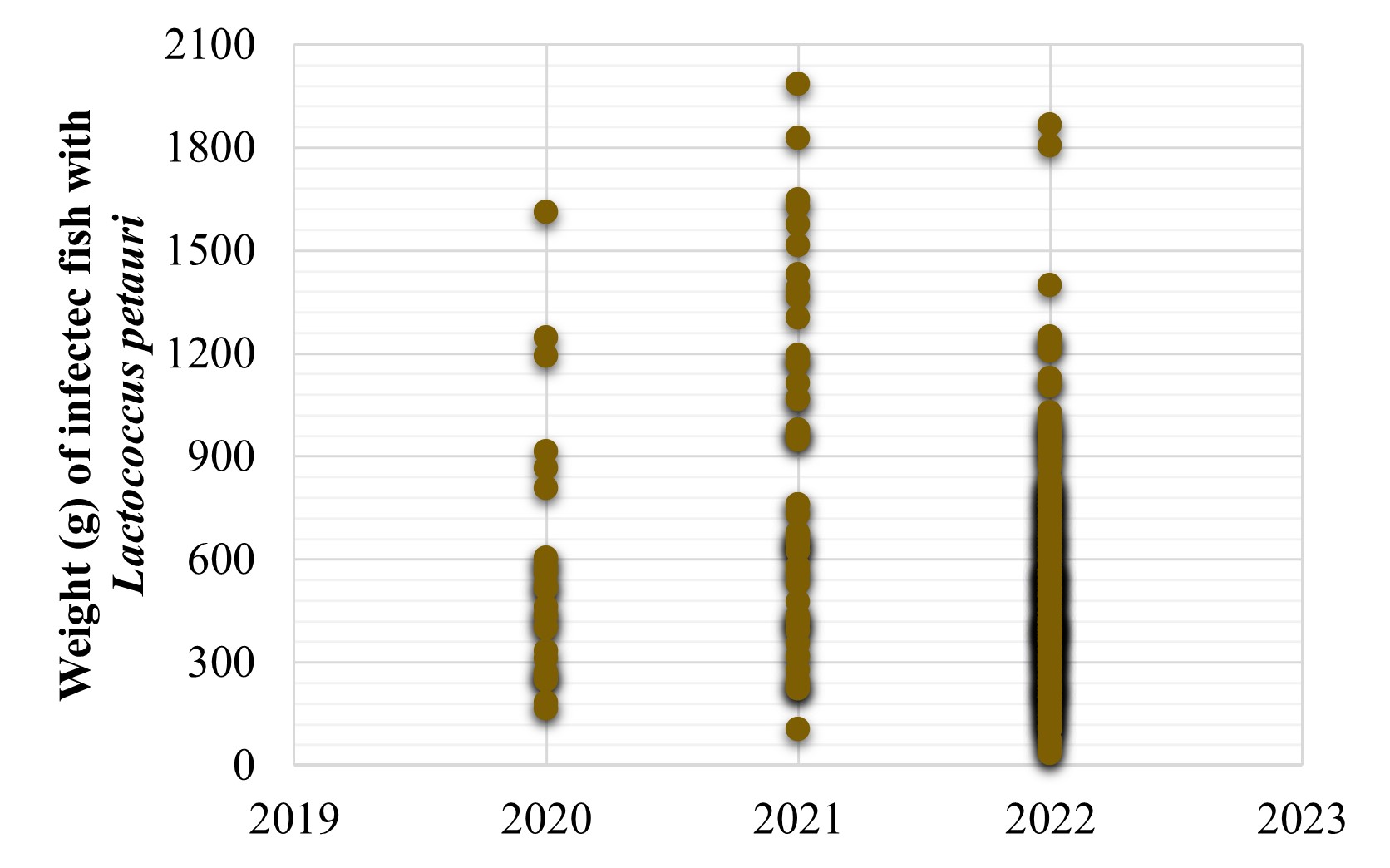
Figure 2. Distribution of weight (g) of tilapia infected with Lactococcus petauri, in farms in Brazil, between the years 2020 to 2022. Data recorded by the diagnostic history of the AQUAVET/UFMG Laboratory, under the responsibility of Prof. Henrique Figueiredo.
Pathogenesis and clinical signs
As observed in streptococcal disease, Lactococcus petauri infection causes septicemia and bacterial meningoencephalitis, affecting the central nervous system of fish. Among the clinical signs commonly observed are erratic swimming (Figure 3a) and melanosis, which is the darkening of fish color. In addition, we observed ocular opacity (Figure 3b) in an inflammatory process that affects entire eye compartments and leads to the occurrence of exophthalmia, also known as popeye. Another pathological change commonly found in tilapia with lactococcosis is the occurrence of extensive areas of gill necrosis (Figure 3c), which in turn leads to respiratory deficit in sick animals. Internally, we observed an increase in spleen size (splenomegaly) and pericardium infection, called pericarditis.

Figure 3. Clinical signs of tilapia with lactococcosis. Animals with erratic swimming can be observed on the surface of cages (a), corneal opacity (b) and extensive areas of gill necrosis (c).
In general, all these clinical signs are the same as those observed during Streptococcus infection, especially in infections caused by Streptococcus agalactiae serotype Ib and serotype III. It is not possible to differentiate Lactococcus from Streptococcus infection in tilapia based on the observation of clinical signs in the field. Thus, the routine collection of sick animals and dispatching to specialized laboratories becomes fundamental for the correct diagnosis of the disease.
Diagnosis
For the correct diagnosis we recommend the minimum of 20 fish to be collected and sent to the laboratory. The animals can be properly packaged, in temperatures ranging from 0 to 4 degree Celsius. In the laboratory these animals will be decontaminated, necropsied and brain and kidney fragments will be used for microbiological analysis in appropriate culture media. After obtaining the bacterial isolates, Gram-staining, biochemical tests, MALDI-TOF and molecular analysis can be performed for determination of the Lactococcus species.
Currently, the differentiation of the species Lactococcus garvieae and Lactococcus petauri is not an easy task. It is necessary to perform sequencing of the entire genome of the bacterium to achieve precision distinction between these species (or even the sequencing of gyrB gene), which are genetically and phenotypically closely related. However, we believe that soon we can rely on new, more agile tools for distinguishing these bacterial species, maintaining the accuracy of the diagnosis.
Treatment
When it comes to emerging diseases, treatment options gain great importance. Even before reaching the delivery of custom-made vaccines containing the new strain in question, it is often necessary to carry out interventions to treat the disease using antibiotics. However, we noticed that the susceptibility profile of different Lactococcus petauri isolates to a varied number of antimicrobial molecules showed a worrying profile of multiresistance. The highest frequency of resistance was observed to the antimicrobials norfloxacin, amoxicillin and florfenicol. To date, resistance to oxytetracycline has not been detected in L. petauri. However, for some farms where the infection was caused by L. garvieae, the occurrence of oxytetracycline resistance was detected.
Vaccination
The use of autogenous vaccines of Vaxxinova’s Govaxx® line brings together the most complete solution in vaccination programs for production animals, being the leading product line in customization of health management for tilapia culture. Currently, a robust portfolio is available to the Brazilian market that brings together solutions against different species and serotypes of Streptococcus, as well as Francisella orientalis. And now Lactococcus petauri is part of the solutions delivered to tilapia producers, according to the diagnosis of these agents in fish farms.
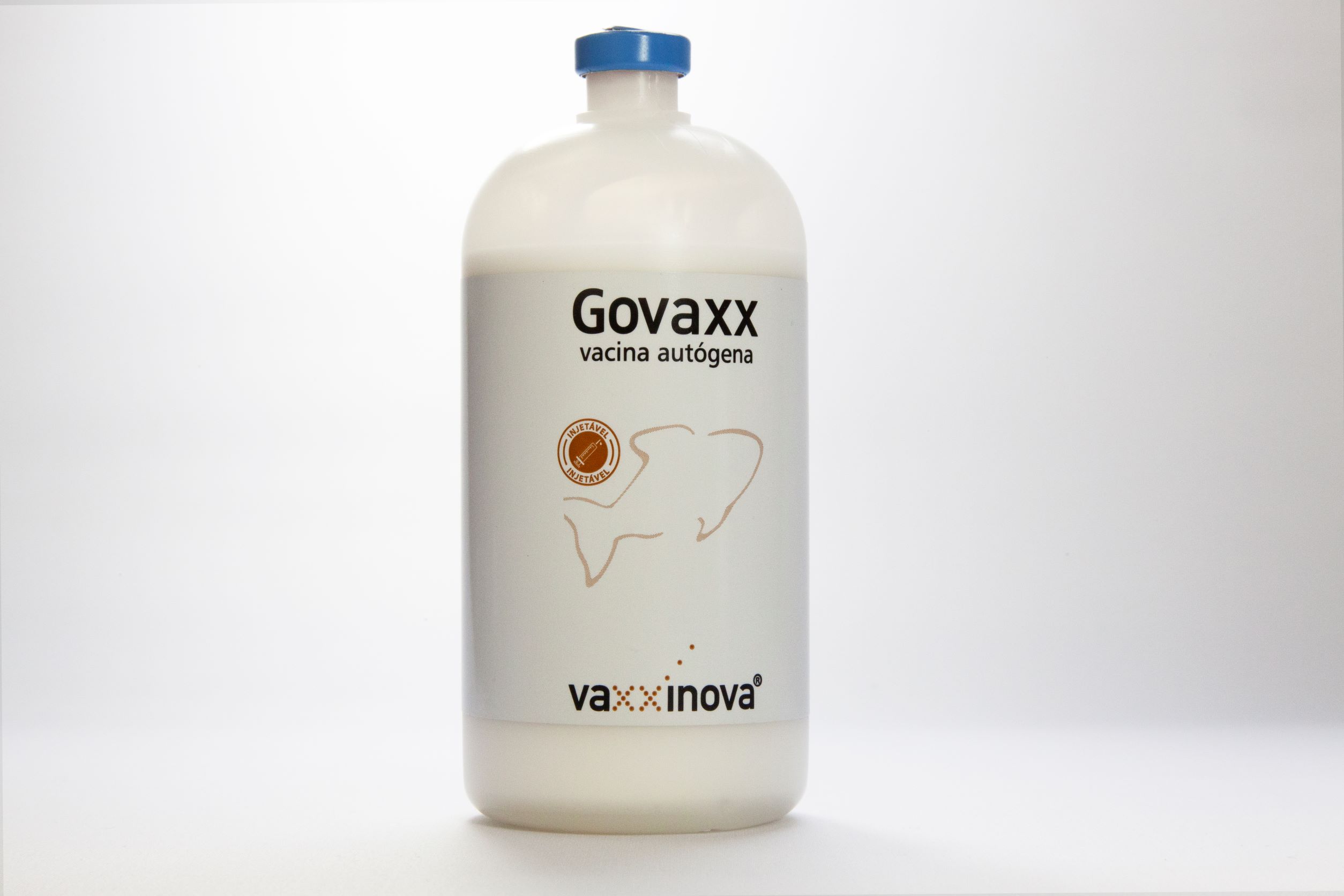
To produce an autogenous vaccine against Lactococcus, it is necessary that field technicians and producers contact a health professional. The veterinarian will collect sick fish on the target production unit, where clinical cases of the disease are occurring and send clinical samples to a laboratory specialized in fish diagnosis. With the obtaining of the field isolate of the bacterium Lactococccus petauri, a prescription for the use of autogenous vaccine against this pathogen is made and authorization to produce the vaccine is requested to MAPA (Ministry of Agriculture, Livestock and Food Supply).
After obtaining the production approval of the autogenous vaccine by MAPA, which occurs within 48 h after the application, the authorized veterinary company receives the field isolate and prepares the production of “seeds” for producing the vaccine using the isolated bacteria of sick fish (Figure 4). Thus, we provide high antigenic specificity necessary for disease control, using bacterial strains that occur in the field, obtaining maximum protection for the vaccinated flock with a customized product. In addition, another major benefit of autogenous vaccines is the agility to deliver solutions against emerging diseases, such as Lactococcus, for which there is not yet a licensed vaccines on the global market. Therewith providing an effective solution to reduce the use of antibiotics for the treatment of the disease, in addition to promoting animal health and welfare during the production cycle.

Figure 4. Key steps in the process of autogenous vaccines production in Brazil.
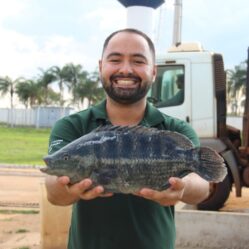
Santiago Benites de Pádua, DVM, MSc in Aquaculture Aquaculture Marketing Manager – Vaxxinova Brazil

Henrique C. P. Figueiredo, DVM, PhD. – Professor of aquatic animal health – Veterinary School, Federal University of Minas Gerais – Brazil
Disclaimer: this article is a translation from a brochure by Vaxxinova Brazil in Portuguese. The content relates to the use of the products and its field results in Brazil and Latin American countries.
A reference to any product/service in this article does not imply that such product(s) with the same specifications, is or will be available at your location. Any product shown or referred to on this website may be subject to different regulatory requirements depending on the country of use.
Please contact your local Vaxxinova representative for more information.
